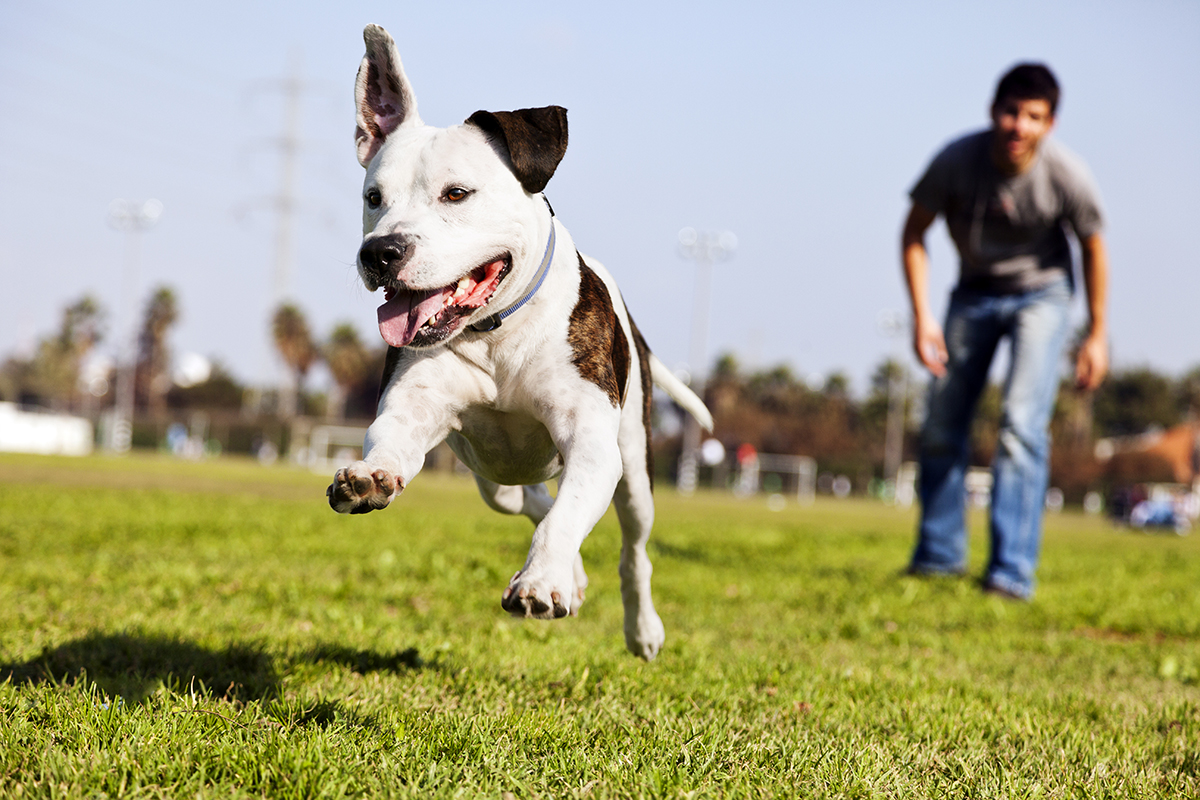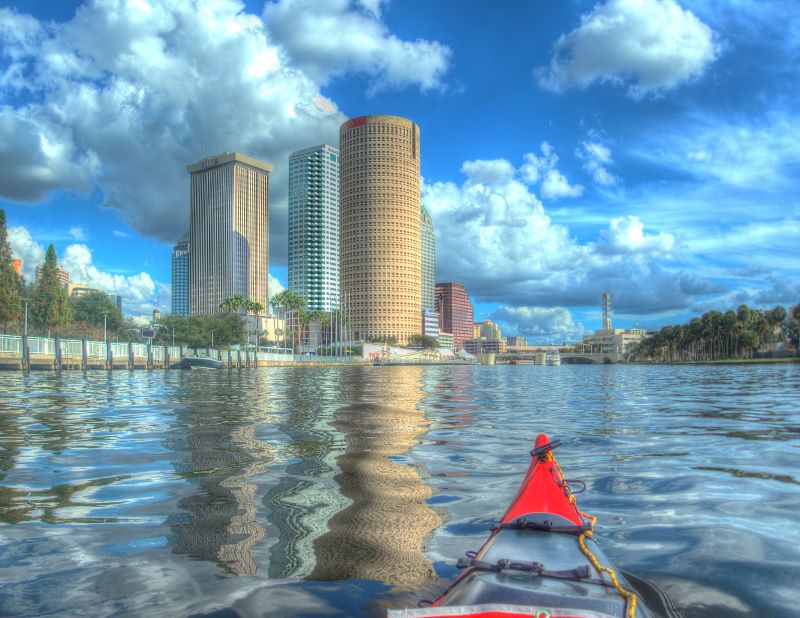
Which U.S. cities have the most pup-friendly spots for unleashing man’s best friend?
To mark July as National Lost Pet Prevention Month, LawnStarter ranked 2024’s Best Dog Park Cities.
We compared 101 of the biggest U.S. cities based on 3 categories. We considered access to dog parks per 100,000 (human) residents, number of top-rated dog parks (4.5+ bones), and weather conditions, among 8 total metrics.
Sniff through our ranking below. To learn how we ranked the cities, see our methodology.
Contents
- City Rankings
- Top 5 Close Up
- Key Insights
- Ask the Experts
- Methodology
- Final Thoughts: Build Your Own Backyard Dog Park
City Rankings
See how each city fared in our ranking:
Top 5 Close Up
Check out the slideshow below for highlights on each of our top 5 cities for dog parks.
Key Insights
Let the dogs out in our top-ranking cities, Boise, Idaho (No. 1), San Francisco (No. 2), and Portland (No. 3). Western cities fetch 7 spots in our top 10, with abundant dog parks and more moderate climates. Dog parks may bark up higher demand in these dog-loving cities where average homeowners have limited yard space.
You might have a ruff time finding a secluded spot for your pup to play in cities like Los Angeles (No. 54), Dallas (No. 58), and Philadelphia (No. 73), which land in the worse half of our ranking with fewer dog parks. Cleveland, Ohio (No. 99), and Garland, Texas (No. 100), score near the tail-end, alongside Newark, New Jersey, in last place. These cities lack quality pup parks and sunshine for them to bask in.
Ask the Experts
Dog owners and foster puprents can reap the benefits of socializing a trained or well-behaved canine at their local dog park. But not all pups (or pet parents) are familiar with dog-park petiquette.
We turned to a pack of animal experts for advice and tips to keep in mind before heading to the dog park to play. See if your pup is ready with help from their insights below.
- On-leash, off-leash, or no dog park: What’s the best way to find the right playground for your pup?
- What are the pros and cons of mixing dogs of all sizes in an off-leash dog park or play area?
- What are the three golden rules of dog parks that one must never break?
- What benefits, if any, do dog parks provide to dog owners themselves?
- Some people are opposed to dog parks, arguing that dog parks gentrify neighborhoods and take space away from traditional green spaces that all residents can use. What’s your take?
- What are three fresh ways that dog parks can be improved?




On-leash, off-leash, or no dog park: What’s the best way to find the right playground for your pup?
Different dogs have different needs.
Some prefer the company of people and feel nervous around other dogs. For them, a leashed walk around town may be the best option.
Other dogs love to run around and wrestle and socialize with other dogs. For them, a dog park is crucial, unless they live in a multi-dog household.
It is always important to attend to your dog’s signals when you decide whether to go to a dog park.
What are the pros and cons of mixing dogs of all sizes in an off-leash dog park or play area?
I don’t think the dogs’ sizes matter all that much. Large dogs will deliberately handicap themselves to play with a much smaller dog. The process is very sweet actually because they don’t use their superior strength and size against their friends.
Some dogs are aggressive and have a difficult time interacting with other dogs. Being on a leash can exacerbate this problem, so it is worth finding out in a safe environment how your dog reacts to different situations.
Having a leash on your dog at a dog park is generally a bad idea because dogs will naturally become more aggressive when they see that everyone else is free to run around and they are stuck.
What are the three golden rules of dog parks that one must never break?
Three golden rules of dog parks:
- Pay attention to when your dog does his or her business, and pick up after him or her immediately. Otherwise, because of the density of traffic at the park, someone will inevitably end up stepping in your dog’s business or another dog might end up eating it, both of which are disgusting and your fault if you did not pick up.
- Pay attention to whether your dog is becoming aggressive with another dog so you can intervene before a fight begins.
- Pay attention to everything happening at the dog park so you can help out if other dogs get into trouble. The dog park is not a place for you to sit back, relax, and read the newspaper.
What benefits, if any, do dog parks provide to dog owners themselves?
Dog parks give dog moms and dads an opportunity to socialize with people who share something in common with them — a love of dogs and a knowledge of the agonies and ecstacies of having a dog in the family.
Some people are opposed to dog parks, arguing that dog parks gentrify neighborhoods and take space away from traditional green spaces that all residents can use. What’s your take?
I disagree with that view. I have seen dog parks in different kinds of neighborhoods. Because so many people have dogs, it is a space that gets used a lot more than most spaces. Also, even people who don’t have a dog often enjoy watching the dogs have a wonderful time with one another.
What are three fresh ways that dog parks can be improved?
Three fresh ways to improve dog parks:
- The park should have bags supplied by the city so no one has an excuse for failing to pick up after their dog.
- There should be a composting program so the dog waste can be used to fertilize area soil instead of just going into landfill.
- The ground of the dog parks can be covered in pebbles rather than grass or soil so the park continues looking good even after lots of dogs have used it.

On-leash, off-leash, or no dog park: What’s the best way to find the right playground for your pup?
Visit the park first without your dog. Take some time to observe the dogs, their owners, and the facilities and infrastructure of the park itself. A park that has aggressive dogs, poop, or inattentive owners are red flags.
You want to make sure that the park has adequate fencing, separate play areas for large and small breeds, and that the environment is clean and safe.
The size and capacity of the dog park may influence whether this park is good for your dog. Larger parks will inherently have more dogs, so if large groups of dogs are intimidating, then you may want to go elsewhere or go at off-peak hours.
What are the pros and cons of mixing dogs of all sizes in an off-leash dog park or play area?
Exposing dogs to a diverse group of playmates increases their sociability (aka “their ability to get along with others”).
Smaller dogs may be at increased risk of injury when playing with larger breeds, simply because one is so much larger than the other. Further, large breeds may perceive smaller breeds as prey, rather than playmates.
Therefore, it is important to understand your dog, their level of socialization, and their breed’s disposition toward small, fast-moving animals.
What are the three golden rules of dog parks that one must never break?
- Dogs that are unvaccinated, under 4 months of age, aggressive, injured, ill, or in heat should stay home.
- You are responsible for your dog — from poop to behavior. Pick up after your dog, and ensure they are playing well with others.
- Make friends, but don’t share your water. Dogs are more likely to get sick if they drink from the communal water bowl.
What benefits, if any, do dog parks provide to dog owners themselves?
Dog parks provide an opportunity to socialize for dogs and humans. Dog parks provide us an opportunity to spend time outside with animals. Whether you have a dog or not, spending time in a dog park can be fun and rewarding.
Some people are opposed to dog parks, arguing that dog parks gentrify neighborhoods and take space away from traditional green spaces that all residents can use. What’s your take?
In most scenarios, balance is key. Humans have a long relationship with dogs, and dog ownership is typically associated with increased physical and mental health.
Developing infrastructure that benefits both dogs and humans can be viewed as a win-win. However, these societal advancements shouldn’t be accompanied with a complete elimination of traditional green spaces.
What are three fresh ways that dog parks can be improved?
- Dog-friendly furniture and agility play for all sizes of dogs
- Shade and seating for the owners and the dogs
- Handwashing stations

On-leash, off-leash, or no dog park: What’s the best way to find the right playground for your pup?
Dogs parks are only as successful as the demand from the people who visit them. In my opinion, the more enforcement of the rules, the better. Accidents are somewhat common at dog parks for both dogs and people, and thus we need to focus on community safety.
I believe an off-leash park is possible but not for dogs new to a park. Perhaps the best idea is to have an off-leash park for visitors who have accessed the park for 20 visits or more without an incident and on-leash for those who are newer (while they better learn their animals and their own ability to control their animals). This requires enforcement and someone controlling the guidelines, and not all communities are willing to support their parks to this level.
Parks should require local standard vaccinations and parasite preventatives, as well. Large parks should pay for attendants to ensure rules are followed, and while I know this is unpopular, it keeps the animals safe.
What are the pros and cons of mixing dogs of all sizes in an off-leash dog park or play area?
I do not think it is only the size of the dog that matters. Yes, smaller dogs can get more hurt with boisterous play or “fights,” but some small dogs can be very dominant and aggressive and “start” fights.
As I noted in the prior comment, I believe it is familiarity that helps. If dog parks could be divided into a few different sections more easily with paid monitors (for large parks), it helps.
Large and small dogs can be owned by the same people and get along very well and enjoy the parks together. People need to know their animal and know their reactions to keep everyone safe.
What are the three golden rules of dog parks that one must never break?
- Leave your phone or social media device in your car. Your animals deserve your time, and unattended animals are the ones that either get hurt or cause problems.
- Know your animal. If they do not enjoy crowds, people, or other dogs, do not take them to a dog park. It is kind of silly that I have to say this, but it happens. The owners want to socialize so they take their animal when it is not in the animal’s best interest or a positive experience for the pet. Just like people, some dogs want socialization and some do not.
- Do not spread disease. Do not go to a dog park that does not require local recommended vaccinations and parasite control. Also, if you know that people are sharing dog-park keys or passcodes, report them or stop going to those parks. Safety for everyone requires people to follow rules. This, of course, means people should not go to parks if they themselves are sick.
What benefits, if any, do dog parks provide to dog owners themselves?
Animals definitely help people socialize. While people may not acquire a dog for this reason, dogs can definitely provide a social network for their owner. Dog parks allow people with similar interests to mingle when they may not normally interact. Thus, dog parks can decrease loneliness and encourage exercise.
While I believe this is all true, I just caution that animals and people can get hurt in dog parks if they are not alert and that people need to remember that the dog’s needs should come first when it comes to visiting dog parks.
Some people are opposed to dog parks, arguing that dog parks gentrify neighborhoods and take space away from traditional green spaces that all residents can use. What’s your take?
I don’t think this is an easy question to answer because dog parks and their value definitely differ by where the park is built and what their rules are. On-leash dog parks, for example, do not limit anyone from attending and can be enjoyed by everyone.
Also, over 50% of American households own a dog, and thus taking space for people to interact with their animals makes natural sense. Also, the more people can go outside with their animal, the more they will get exercise — a “win win” for everyone.
I believe that making dog parks more about community will help this question, though — that just because you go to a park with your dog doesn’t mean you cannot jog there or fish or do other activities (depending on the size and area of the park). The more welcoming, the better.
What are three fresh ways that dog parks can be improved?
- Make rules that make sense for the community the park is in (not all parks need the same rules), and do not be afraid to enforce the rules. Having funds that allow for someone to monitor and enforce the rules makes sense. If this enforcement is a volunteer or nonprofit position, then often the rules do not get followed.
- Ask the community what they want before the dog park is opened. Find the funding source, and make sure the rules make sense — all before the park opens. Is it just a gathering place, or will other activities be allowed? Make sure that animal scientists, behavioral specialists, and veterinarians are consulted. Remember: Dog parks should focus on the dog.
- Make it fun and educational, and allow families. While the park is more about the dog, it should be something the family can do together.
Methodology
First, we determined the factors (metrics) that are most relevant to rank the Best Dog Park Cities. We then assigned a weight to each factor based on its importance and grouped those factors into 3 categories: Access, Quality, and Climate. The categories, factors, and their weights are listed in the table below.
For each of the 200 biggest U.S. cities, we then gathered data on each factor from the sources listed below the table. We eliminated 99 cities lacking sufficient data in a single category, resulting in a final sample size of 101 cities.
Finally, we calculated scores (out of 100 points) for each city to determine its rank in each factor, each category, and overall. A city’s Overall Score is the average of its scores across all factors and categories. The highest Overall Score ranked “Best” (No. 1) and the lowest “Worst” (No. 101).
Note: The “Worst” among individual factors may not be No. 101 due to ties.
Sources: BringFido, National Oceanic and Atmospheric Administration, and The Trust for Public Land
Final Thoughts: Build Your Own Backyard Dog Park
Dogs are the most preferred pet in the U.S., with around 65.1 million households including at least 1 canine.
Unfortunately, many good doggos are getting too many treats and not enough exercise. Research shows around 22% of pups in the U.S. struggle with obesity, which can lead to costly long-term health issues like diabetes, joint problems, breathing issues, and a shortened lifespan.
Dog parks and play areas allow pups and their humans to exercise and pawty with new pals. Other places like pup-friendly coworking spaces, private pooch parks for rent, and indoor dog parks allow owners to bring their dogs into the world to explore, socialize, and play.
Design a backyard escape for your pup with help from our guides below.
- Explore our dog-friendly landscaping tips.
- Use pet-friendly lawn fertilizer.
- Plant the most dog-friendly grass type.
- Avoid landscaping with plants that are poisonous to dogs.
- Repair grass spots that have been damaged by dog pee.
- Fence off your property to keep Rover safe and secure outside.
Hire a local LawnStarter crew to transform your backyard into the perfect oasis for playing with your pups.
Media Resources
- High-resolution images of cities
- 2023’s Best Dog Park Cities ranking results
- 2022’s Best Dog Park Cities ranking results
- 2021’s Best Dog Park Cities ranking results
Main Photo Credit: Shutterstock




